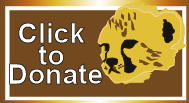And
so I'm back. Alabama seems a foreign land to me. Much too green. Everywhere I
look is green. I can't see the distant Waterberg Plateau. I can't see past the
houses, the trees, the power lines.
I
see my cats, the dogs and a few birds, but where are the Kudu? The Warthogs?
The Baboons? The Cheetahs for goodness sake?
I
woke in the middle of the night and asked Margaret- peacefully sleeping at my
side- "Are we on the truck?" I thought somehow I'd fallen asleep
while on a game count. I can attribute that to not having slept for forty
hours, but there is this feeling inside that I believed I was still in Namibia
doing one of my favorite activities.
I'm
not at all sure this, now, is my life- that Huntsville is my home- or that I
even belong here.
In
Namibia, I found I need very little to be truly happy- my beautiful wife/
friend/ companion of thirty-plus years, friends to laugh and work with, air to
breathe, a good hot shower, a starry night sky, a place to lay my head at night.
This
first Huntsville day I find I have too many things. I am crowded. One good
thing I can say about these many possessions: I can sell them to return to
Africa. Most of them are not going to bring much in the way of wealth, but
added together they will return me to that Southern land.
My
heart has been broken. I left the animals, the dust and good companions behind
in that now remote place. I find great consolation in my animals, but I also
find a certain emptiness in the normal life now restored. Can my real life
consist of going to work, coming home, eating dinner, sleeping, and repeating
that cycle four more times until the weekend? Can my weekends be filled with
the mundane of sleeping late, watching TV, fiddling with inconsequential
self-assigned tasks I once considered worthwhile, and waiting for my next
paycheck? That no longer seems like life to me.
Life.
Waking to the sound of some unrelaxed dog barking. Hearing some unknown bird
crying at the break of dawn, heat creeping into your small, round shelter.
Putting on some previously worn clothes in semi-darkness knowing your day will
consist of raking out goat pens (kraal) or cheetah feeding pens. Helping those
working along side of you. Seemingly endless walks to and from the Centre.
Greeting known and unknown faces. Feeling the heat rising as the sun climbs
higher. Being greeted by an Anatolian Shepherd
as if you were their best friend. Herding a goat out of a pen.. Red gloving
your hands as you prepare the food for the waiting, hungry acinonyx jubatus.
Rubbing predator powder onto the meal to promote good health among the world's
fastest land mammal. Watching as the new shepherd puppies gain weight, sight,
hearing, and learn about food other than their mother's milk. Seeing the proud
goat mother with her two newborn kids.
My
visage has acquired a certain redness. Dried, raw skin patches my arms and
lower back, but I feel they are honor badges of hard and welcome work. My lips
are chapped and cracked, but they are a sign of the wide smiles and laughter
that crossed them. My fingernails are broken and chipped- more evidence. My
foot aches when I sit too long, but I now feel it's signaling to get up- not a
sign to keep resting. My clothes smell of an ancient dust. Even the nightmare
of air travel ended, leaving me the desire to endure it again to return to a life
I never knew possible.
I
am a man reborn and salvaged from mundane existence back into living. I am
alive.




























